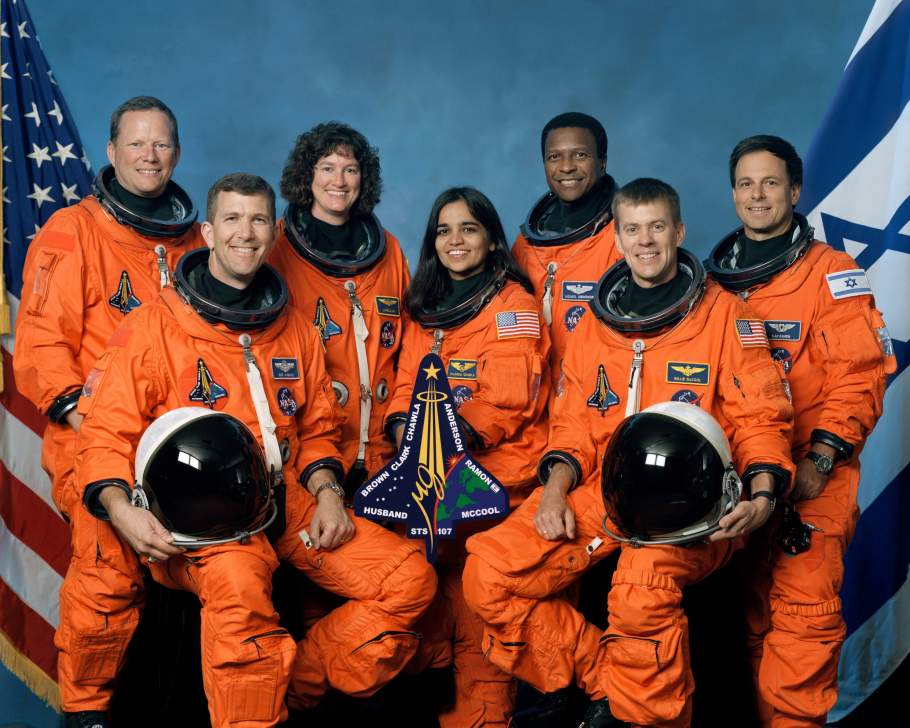
What Happened To The Columbia Shuttle On Failed Reentry?
Share
A follower has reached out to us wanting to know the science behind the failed re-entry of the space shuttle Columbia in 2003 which infamously broke apart before reaching Earth safely. No crew survived.
This, along with the Challenger failed launch in 1986 also killed all crew on board, effectively put an end to the space shuttle fleet in 2011.
But hold on to your lunch because this one is going to get a bit grim...
"Hey guys, I have been catching up on what made the SpaceX launch of astronauts so historic. I was just a pup in the early 2000s and don't remember much of the events before the shuttle was retired. What happened to the crew, the shuttle and whatever else that lead to the shuttles getting shut down?
Cheers,
Fraser."
Thanks for reaching out Fraser.
This is a bit of a sad tale and one that shows the sadder side of the American space program.
We're not going to get into the Challenger incident so much as the Columbia, which had a more direct effect on the cessation of the shuttle program.
On the 1st of February in 2003, the space shuttle Columbia came back to Earth and broke apart in our atmosphere, killing all seven astronauts on board - Rick Husband, Michael Anderson, David Brown, Kalpana Chawla, Laurel Clark, William McCool, and Ilan Ramon.
The below photo was recovered from the wreckage inside an undeveloped film canister.

Columbia was the first shuttle to make outer space with its maiden voyage in April 1981 and completed a total of 27 missions before the 2003 incident.
You can see why the failed reentry was a tragedy and a shock after so many successful missions.
Upon leaving Earth on its final mission, about 82 seconds after launch, a piece of foam fell from the external tank to the shuttle.
See it here:
You can actually see the damage and yet NASA officials in charge declined to use orbital spy cameras to get a better look, much to the dismay of several key NASA team members who insisted the wing was breached.
On February 1st, the Columbia made its landing approach much like it had several times before. However, this time some abnormal readings data were recorded by mission control.
Crucial temperature and tyre pressure readings were lost as Columbia travelled 18 times the speed of sound at 61,170 metres above the ground.
The pierced left wing allowed the gases in our atmosphere to seep into the shuttle during re-entry, causing a total structural failure of the shuttle and crew.
WARNING: Detailed parts of the crash within the shuttle may be distressing.
At the time of the incident, NASA determined one crew member was without a helmet, one was moving about the cabin, three were not wearing gloves and some were not buckled in at all.
Sadly, none of this would have made any difference.
This is (what used to be) a helmet found in Norwood, Texas.
The faceplate, hinge, and all other hardware has been stripped away with the back delaminated. Worn or not, this wouldn't have provided any protection from the crash.

Just 26 seconds after the first master alarm, cabin pressure failed. By the time the pressure reached near-vacuum 41 seconds later at 100,000 feet, the crew members not fully suited up were already unconscious, but within seconds, the cabin was disintegrating around them.
Like everything else in the cabin, the crew were torn apart by hypersonic turbulence and multiple violent impacts and partially burned by adiabatic heating and fire.
We are not going to go into detail about what the recovery team found around the 5,180km debris zone in any intimate terms for the sensitivity of the victims and their families.
It should be enough to say that NASA records state it took a motorcade of 15 cars to collect the remains of just one crew member.

NASA eventually recovered 84,000 pieces which only made a combined 38% of the original shuttle.
The following weeks saw officials meticulously working through the entire Columbia mission. Eventually creating a multi-volume report on the shuttle failure and the cause.
The report was ruinous for the working culture at NASA during the shuttle years, and possibly long before with the importance of safety issues depreciating over the years.
"Cultural traits and organizational practices detrimental to safety were allowed to develop, reliance on past success as a substitute for sound engineering practices"
"... organizational barriers that prevented effective communication of critical safety information"
The shuttle's external tank was redesigned and the shuttle program continued just long enough to complete construction on the International Space Station.
In 2008, NASA released a crew survival report including the Columbia crew's final minutes. Per the record, the crew most likely survived the initial breakup of the shuttle but mercifully lost consciousness when the cabin lost pressure.
Their contribution to science lives on.
#Space_Aus




